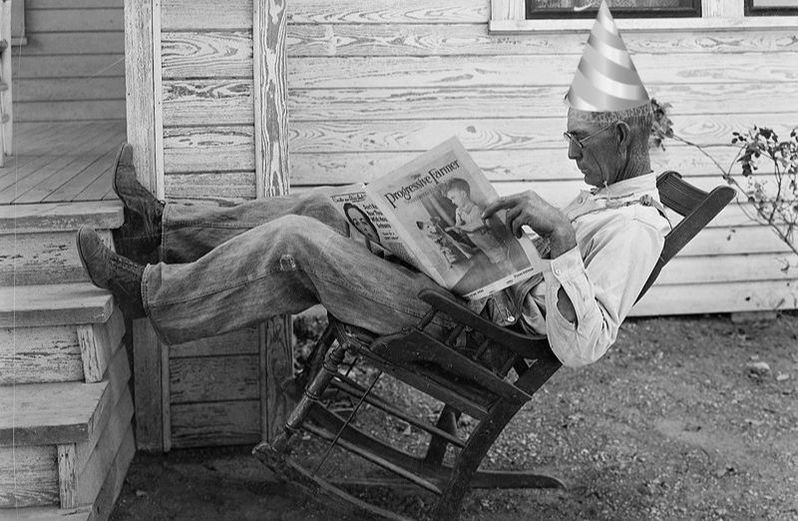WORKOUTS AT FIFTY AND BEYOND: WHAT NEEDS TO CHANGE?

I’ve been a workout nut since I was a kid. In fact, in high school metals class I built myself a bench / multi-gym, complete with a cable pulldown, squat rack, and three-position incline. Although I have done lots of different things in the name of sport and fitness over the years, I continue to promote Resistance Training (weights or functional strength training) as the king of the heap. If I could go back in time and change one thing about my training, it’s that I used to be (and probably occasionally still am) guilty of overtraining; working out too hard, too often, too heavy, or not mixing things up enough.
Even though I’ll be turning fifty in a few days, I still feel good. And despite MY KIDS having fun telling me differently, it’s important to remember that Geezerhood is a state of mind. The perfect example is TOM BRADY — an individual still functioning at the highest level in the history of professional football, at the toughest position in all of sports, at the unheard of age of forty. What’s his secret? Because he completely understands the devastating consequences of SYSTEMIC INFLAMMATION, he lives and eats accordingly (HERE). It’s paid off for him and it can pay off for you as well.
Honestly, other than using some common sense and possibly putting a greater emphasis on flexibility and core strength, I’m not sure those of us FIFTY, SIXTY, AND BEYOND who are already hitting it need to do anything radically different. For those of you, however, who aren’t “hitting it”…… Because there are already thousands of studies on using exercise to effectively deal with everything from OBESITY, to DIABETES, to DEPRESSION & DEMENTIA, as well as hundreds of others, create a plan you can live with — something you like (or can at least tolerate for 20 minutes a day) —- and get with the program.
I personally like my HOMEMADE KETTLEBELLS, but often workout using lower body powerlifting movements (light squats, deadlifts from inside a hex-bar), an array of planks done from a WBV MACHINE, a lot of tire pounding (both with two individual five lb hammers as well as an old 15 lb antique cast-iron maul), pullups, rows, burpees, and all sorts of stuff done with an exercise ball (HERE) or bosu. Unless it’s too cold or icy, I’ll often go out and hit the TRAMPOLINE for ten or fifteen minutes and sometimes do SPRINTS in the field below the house. Oh; I also like to take care of my own firewood supply (HERE).
In the summer, I can frequently be found at the CURRENT or JACKS FORK RIVERS, often kayaking both upstream and down (my personal best was Van Buren to McSpadden’s Cabin a number of years ago — approximately 10 miles one way). I also do a lot of swimming, although I never swim laps (when I can, I’m a SNORKELING machine). I still can’t ride a bike because of the mechanical way it affects my hip and foot, but I can’t complain.
THANKS LARGELY TO SHAWN ENO, I only have about one tenth of the day-to-day pain I dealt with for a decade (virtually unnoticeable now). Personal experience with CHRONIC PAIN is the chief reason I am so focused on helping others struggling with pain themselves.
Speaking of focus, what’s my number one way to help keep workouts focused and intense? That’s easy — it’s the same thing it’s always been……..music. Not surprisingly, a brand new study from McGill University (the same university that did the study showing that chronic pain degenerates your brain almost ten times faster than normal — HERE) and published in the February issue of Scientific Reports revealed that the same brain centers stimulated by drugs and sex are stimulated by — you guessed it — music. The study’s press release, published in Neuroscience News (Sex, Drugs, and Rock & Roll Chemistry in the Brain) stated…
The same brain-chemical system that mediates feelings of pleasure from sex, recreational drugs, and food is also critical to experiencing musical pleasure. This is the first demonstration that the brain’s own opioids are directly involved in musical pleasure.
The researchers took college aged students and gave them a placebo on some days, and an opioid blocker called naltrexone on other days. The subjects were given their favorite songs to listen to, which they had to assess as far as how much enjoyment the music brought them. Even though the subjects were listening to their all-time favorite songs, the music wasn’t enjoyable on the days they were given the drug.
What am I listening to these days? I’m into a wide variety of music, from classical to classic rock to 80’s. Because I love blended harmonies, I also spend a significant amount of time listening to ACAPELLA CHORAL. And if we’re not playing gospel grass in the clinic, CCM is what you’re likely to hear during regular office hours. But when it comes to working out, I need something with some instrumental zip — something that helps push the energy dial to the right — way to the right.
I’ve been a sucker for AOR since the first time I heard Boston harmonizing back in grade school. The latest AOR band I’ve been listening to while hitting the gym is Work of Art from Sweden. Put them on Spotify next time you’re trying to break a sweat and see what happens. Oh, and be sure to follow us on FACEBOOK!
